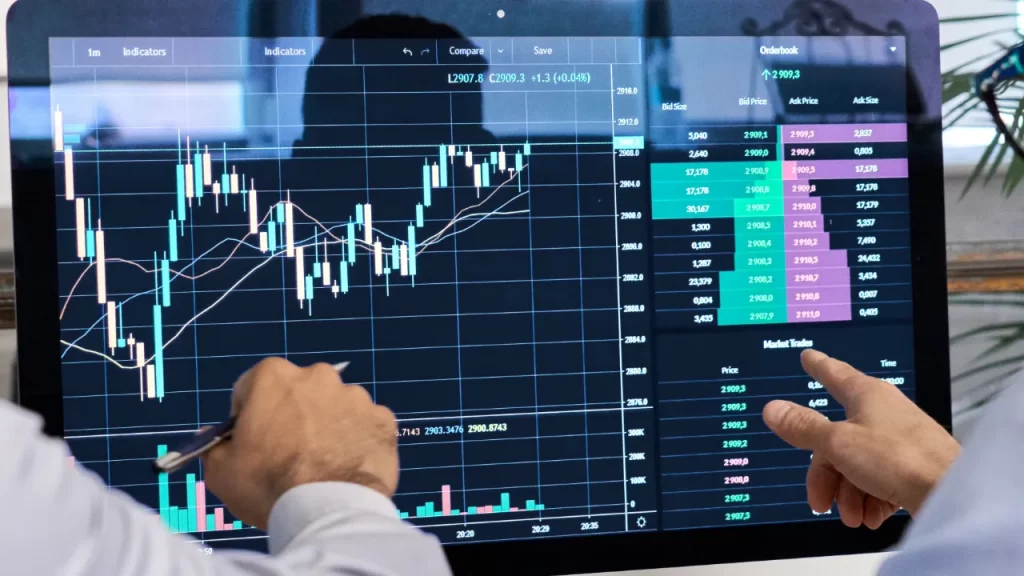In CFD trading, traders use different strategies to take advantage of market movements. Two of the most common approaches are trend following and counter-trend trading.
While trend followers seek to ride strong price movements in one direction, counter-trend traders look for opportunities to trade against existing trends when the market is likely to reverse.
But which strategy is more effective? In this article, we’ll explore the key differences, advantages, and drawbacks of trend following and counter-trend trading to help you determine which approach suits your trading style.

What is Trend Following in CFD Trading?
Trend following is a strategy that involves identifying and trading in the direction of an established trend.
Traders using this method believe that prices move in trends, and once a trend is formed, it is more likely to continue than to reverse.
How Trend Following Works:
- Identify an uptrend (higher highs and higher lows) or a downtrend (lower highs and lower lows).
- Use technical indicators such as moving averages, MACD, and trendlines to confirm the trend.
- Enter a trade in the direction of the trend (buy in an uptrend, sell in a downtrend).
- Hold the position until signs of a trend reversal appear.
What is Counter-Trend Trading in CFD Trading?
Counter-trend trading, also known as mean reversion trading, involves identifying overextended trends and trading against the prevailing direction. This strategy is based on the assumption that markets do not move in a straight line and that extreme price movements will eventually reverse.
How Counter-Trend Trading Works:
- Identify an overbought (potential reversal down) or oversold (potential reversal up) market condition.
- Use technical indicators such as Relative Strength Index (RSI), Bollinger Bands, and support/resistance levels to confirm a potential reversal.
- Enter a trade against the trend (sell when the market is overbought, buy when it is oversold).
- Take profits quickly before the market resumes its original trend.

Trend Following vs. Counter-Trend Trading: Key Differences
- Trading Approach: Trend following trades in the direction of the trend, while counter-trend trading goes against it.
- Market Condition: Trend following works best in strongly trending markets, whereas counter-trend trading is more effective in range-bound markets.
- Risk Level: Trend following carries lower risk when following a strong trend, whereas counter-trend trading has higher risk if the trend does not reverse.
- Holding Period: Trend followers hold trades for days or weeks, while counter-trend traders keep positions for minutes to hours.
- Indicators Used: Trend followers use moving averages, MACD, and trendlines, while counter-trend traders rely on RSI, Bollinger Bands, and support/resistance levels.
- Win Rate vs. Reward: Trend following has a lower win rate but higher reward per trade, whereas counter-trend trading has a higher win rate but smaller profits per trade.
Pros and Cons of Trend Following
Pros:
- Higher profit potential – Riding a trend can result in significant gains.
- Works well in strong trends – Useful in markets with clear upward or downward movements.
- Fewer trades needed – Traders can hold positions for longer periods, reducing trading costs.
Cons:
- Lower win rate – Not all trends continue; false breakouts can lead to losses.
- Requires patience – Waiting for trends to develop can be time-consuming.
- Large stop-losses needed – Trend following requires wider stop losses to avoid being stopped out by normal price fluctuations.
Pros and Cons of Counter-Trend Trading
Pros:
- Higher win rate – Since markets tend to revert to the mean, reversals happen frequently.
- Shorter holding periods – Traders can enter and exit quickly, reducing exposure to risk.
- Smaller stop-losses – Stops are placed near reversal points, limiting potential losses.
Cons:
- Lower profit potential – Counter-trend trades usually capture small price movements.
- Higher risk of large losses – If a trend continues instead of reversing, losses can accumulate quickly.
- Requires fast decision-making – Timing is critical to avoid entering too early or too late.

Which Strategy Works Best?
The effectiveness of trend following vs. counter-trend trading depends on:
- Market Conditions: If the market is trending, trend following is more effective. If the market is ranging, counter-trend trading works better.
- Trading Style: If you prefer long-term trades with bigger profit potential, trend following is ideal. If you like quick, frequent trades, counter-trend trading suits you better.
- Risk Tolerance: Trend following carries lower risk but requires patience, while counter-trend trading has a higher win rate but can lead to big losses if the trend doesn’t reverse.

Best Practices for Both Strategies
For Trend Followers:
- Use moving averages (e.g., 50-day and 200-day) to confirm trends.
- Look for breakouts above resistance or below support to confirm entry.
- Set a trailing stop-loss to lock in profits as the trend progresses.
- Be patient—don’t exit too early unless the trend weakens.
For Counter-Trend Traders:
- Use RSI and Bollinger Bands to identify overbought/oversold conditions.
- Enter trades only when there is strong confirmation of a reversal.
- Keep tight stop-losses to limit risk if the trend continues.
- Take quick profits before the market resumes its main direction.
Conclusion
Both trend following and counter-trend trading can be profitable, but the best approach depends on market conditions, your trading style, and risk tolerance.
Successful CFD traders often combine both strategies, applying trend following in strong markets and counter-trend trading in ranging conditions.
By understanding these two approaches, you can adapt to different market conditions and improve your trading results.






